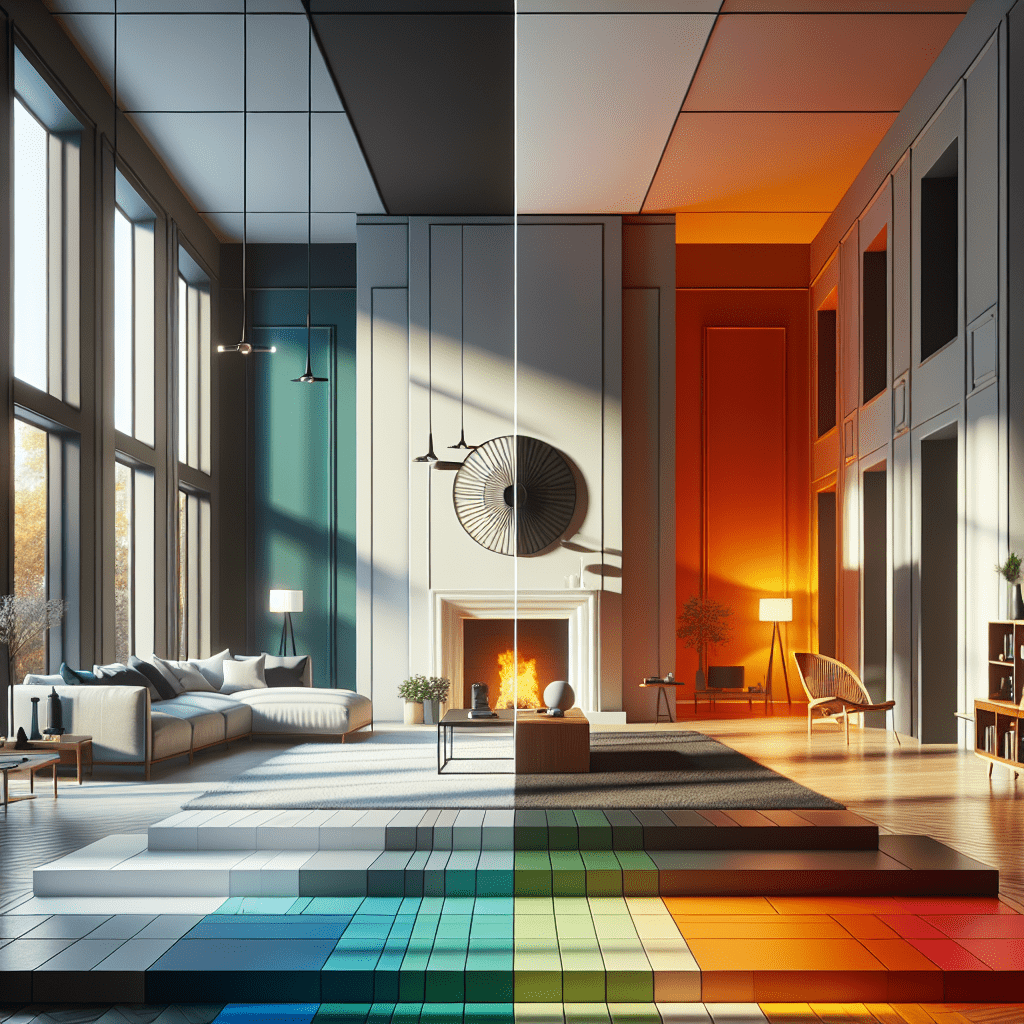Color plays a crucial role in Interior Design, influencing emotions, perceptions, and even behavior. From bold statements to subtle accents, the use of color can transform a space and create a specific ambiance. In this article, we will explore the impactful ways to use color in Interior Design and how you can incorporate it into your own living spaces.
The Psychology of Color
Before diving into specific color schemes and palettes, it’s essential to understand the psychology behind color and how it can affect our mood and overall well-being.
For example, warm colors like red, orange, and yellow are known for their energizing and stimulating properties. They can create a sense of warmth and coziness in a room, making it ideal for social spaces like living rooms or dining areas.
Cool colors such as blue, green, and purple, on the other hand, have a calming and soothing effect. These colors are perfect for bedrooms or home offices where relaxation and focus are essential.
Neutral colors like white, beige, and gray are versatile and can serve as a backdrop for more vibrant accent colors. They can create a sense of balance and harmony in a room, making it feel more spacious and open.
Color Schemes and Combinations
When it comes to choosing color schemes for your living spaces, there are several tried-and-true combinations that you can consider:
- Monochromatic: A monochromatic color scheme uses variations of a single color, creating a harmonious and sophisticated look. This approach can make a room feel cohesive and visually appealing.
- Analogous: Analogous colors are adjacent to each other on the color wheel, such as blue and green or red and orange. This scheme creates a sense of unity and works well in spaces where you want a cohesive and calming atmosphere.
- Complementary: Complementary colors are opposite each other on the color wheel, such as blue and orange or yellow and purple. This scheme creates a dynamic and vibrant look, making it ideal for creating a focal point in a room.
Accent Walls and Statement Pieces
One impactful way to use color in Interior Design is through accent walls and statement pieces. By painting a single wall in a bold or vibrant color, you can create a focal point in a room and add visual interest.
Similarly, incorporating colorful furniture or artwork can make a statement and bring personality to a space. Whether it’s a brightly colored sofa, a patterned rug, or a vibrant piece of art, these elements can add flair and character to a room.
Creating a Mood with Color
Each color has its unique associations and can evoke specific emotions. By strategically incorporating colors into your Interior Design, you can create a mood or ambiance that aligns with the purpose of the space.
For example, using shades of blue in a bedroom can promote relaxation and tranquility, while warm tones like red or orange in a dining room can create a lively and sociable atmosphere. Think about the mood you want to achieve in each room and choose colors that reflect that intention.
Conclusion
Color is a powerful tool in Interior Design, capable of transforming a space and influencing how we feel and experience it. By understanding the psychology of color and experimenting with different color schemes and combinations, you can create a home that not only looks beautiful but also feels comfortable and inviting.
FAQs
Q: How do I choose the right color for my space?
A: Consider the purpose of the room and the mood you want to create. Select colors that align with that intention and complement the existing decor.
Q: Can I combine multiple colors in a room?
A: Yes, mixing and matching colors can add dimension and visual interest. Just be mindful of balance and harmony to avoid overwhelming the space.
Tip:
Don’t be afraid to experiment with color! Start small by adding colorful accessories or textiles, and gradually incorporate bolder hues if you feel comfortable. Have fun with it and let your personality shine through in your design choices.
#Power #Color #Impactful #Ways #Color #Interior #Design

